 We are always looking to discover new ways of making our lives easier through innovative inventions. What we often fail to understand however, is that not all inventions are good for our health. Microwave ovens are one such invention that have been widely mistaken as a healthy convenience.
Do you rely on the convenience of a microwave over a stove, to cook or heat your food? If yes, then you might want to stop and think again before placing your life in the hands on this so called “harmless” man-made invention.
Microwave Oven – Not Really Harmless? The first microwave oven was invented by Raytheon after the World War II. Back then, it didn’t seem like such an important invention for home use. A few years later, microwave ovens gained a lot of popularity for reheating previously-cooked foods and cooking vegetables. Over the last couple of decades, microwave ovens have become a necessity, and now you will rarely find a kitchen without one!
Today, over 90% of homes in America, use microwave ovens for re-heating foods, and for daily meal preparations. It is so easy to use as it just takes a few minutes to get the meal on the table “ready to eat”. However, as you may already know, a microwave oven essentially uses microwave radiations to heat polarized molecules in food. Unfortunately, these microwave radiations have been found to distort the molecular structure of foods. As a result, microwave preparations lack healthy nutrients as most of them are destroyed during heating!
Did you know that the Soviet Union banned microwaves in 1976? Why do you think they would do so and yet the American Government still hasn’t warned us anything about it? Microwave ovens continue to be used in every home, and the reason is simple – microwaves are convenient and energy efficient way of preparing food. Is Microwaved Food Both Safe and Healthy? Here, are a few studies and results that indicate why this may not be the case. 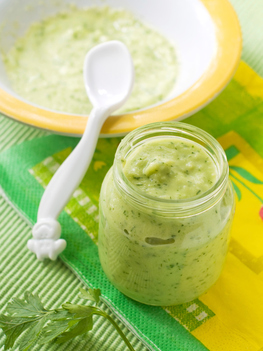 1. Microwaves Are Harmful For Baby Food
It has been found that cooking food in microwaves is an unhealthy and unnatural approach for preparing baby food. According to Young Families, the Minnesota Extension Service of the University of Minnesota published in 1989, milk bottle heated in microwaves may cause harm to the baby who drinks it.
High milk temperature (often resulted due to overheating) could not only burn a baby’s mouth and throat, the steam all encapsulated in the bottle may also cause the bottle to explode due to the presence of radiation gases within it.
Maybe these effects can be ignored or averted, but the fact that milk heated in a microwavemay change the molecular structure of the milk is something that calls for attention.Microwave radiations can cause the essential nutrients in the baby foods to be lost, making them unfit for consumption. It’s just like feeding fake milk to the child with no real nutrients at all.
The study further confirmed that it may be better and much safer to heat the bottle by placing it under a tap of warm water for a few minutes than to heat it in a microwave oven.
2. Microwaves Can Destroy Your Blood
Another shocking discovery about microwave radiations came into the limelight when a nurse in an Oklahoma hospital used microwaves for warming the blood used for transfusion in a patient. The patient immediately died because of this transfusion. It was found that microwaves injected some kind of destructive substances in our blood when we heat it.
3. Microwaves Reduces Hemoglobin Levels
To understand why microwaves are dangerous for health, a study was carried out by Raum & Zelt in 1992 which showed some noticeable changes in the human build after consumingmicrowave heated milk and vegetables.
In this study, 8 volunteers ate different combinations of the same food cooked in different ways, which caused different changes in the blood of the volunteers. Hemoglobin, which is an important constituent of blood decreased while white blood cells and cholesterolincreased. Lymphocytes, which provide immunity to the body, also decreased which is quite an alarming sign. Bacteria also increased after eating the microwave heated food.
4. Microwaved Food Can Cause Cancer  A food scientist by the name of Dr. Hans Ulrich Hertel who worked with one of the major companies of Switzerland carried out a research which showed striking discoveries about cooking food in microwaves. Dr. Hertel was fired from his company because of raising questions on how the food was prepared. His famous research with a Lausanne university professor which showed that food cooked in microwaves has cancerous effects.Dr. Hertel and Dr. Bernard H. Blanc collaborated on a clinical study at the Swiss Federal Institute of Technology and the University Institute for Biochemistry. Determined to study the physiology of the human body, Dr. Hertel carried out experiments to find out the effects of “microwaved” nutrients on human blood. He showed that microwave radiations completely destroy the nutrients in the food and could cause very bad effects on the human body. He also found out that microwaved food decreased hemoglobin in our body and could increase the cholesterol levels. Comfort OR Health? The Choice Is Yours! The FDA, the government and even the manufacturers themselves may never tell you these harmful effects of cooking food inmicrowaves. As it is evident, microwave ovens are not really the recommended method of cooking. You could either live in denial and keep on using it or give your life some value and start cooking food on stoves. Use the conventional and the safer way! Tell us in the comments below what you think of microwave ovens.
- www.dxnbarcelona.dxnnet.com
 What your words say about who you are and what you believeWritten by Robert T. Kiyosaki My rich dad once said to me, "If I listen to a person's words, I begin to see and feel their soul." Rich dad understood what many successful business people understand, that being able to quickly measure up a person based on things like body language or the words they use is just as important as understanding financial statements and economic reports. One of my rich dad's greatest skills was being able to "read" people, but he also believed you couldn't judge a book by its cover. Like Henry Ford, my rich dad didn't have an excellent education, but both men knew how to hire and work with people who did. Rich dad explained to me at an early age that the ability to bring smart people together and work as a team was one of his primary skills. As a young boy, I sat with my rich dad when he hired people. From those interviews I learned to listen, not so much for just words, but also for core values. From that experience, I learned that, when it comes to the CASHFLOW® Quadrant, people in each quadrant—E for employee, S for self-employed, B for business, and I for investor—had their own way of talking that expressed who they truly were at their core. E-quadrant words A person who comes from the E quadrant might say, "I'm looking for a safe, secure job with good pay and excellent benefits." Words like these tell me that a person's core value is security in the face of fear. People who embrace security as a response to fear like to have things in writing, knowing exactly what they'll make and what their benefits are, such as health insurance provided by the employer. For them, the idea of security is often more important than money. Employees can be presidents of companies...or janitors. It's no so much what they do but the contractual agreement they have that's important to them. S-quadrant words A person who comes from the S quadrant might say, "My rate is $75 per hour." Or, "My normal commission rate is six percent." Or, "I can't seem to find good people to work on this project and get the job done right." Or, "I've got more than twenty hours into this project." Those in the S quadrant like to be their own boss or "do their own thing." When it comes to money, those in the S quadrant don’t like to have their income dependent on other people. If they work hard, they expect to get paid for their work. Conversely, they understand that if they don't work hard, they don't deserve to get paid well. They have fiercely independent souls. B-Quadrant words A person operating out of the B quadrant might say, "I'm looking for a new president to run my company." Those in the B quadrant are almost the opposite of those in the S quadrant. They like to surround themselves with people who can do the job better than they can. Their true motto is, "Why do it yourself when you can hire someone to do it for you, and they can do it better?" Those in the B quadrant like to work on their company and hire smarter people to work in it. I-Quadrant words Someone operating from the I quadrant might say, "Is my cash flow based on an internal rate of return or a net rate of return?" Investors make money with money. They don't have to work because their money is working for them. Because of this, they know how money works. They understand the language of money, and they speak it fluently. What do your words say about you? Have you ever stopped and listened to the words that you use? A good exercise this week would be to slow down and listen to yourself. Find out what you say and how you say it. You may find that at your core, you're someone different than you thought you were. The same holds for those you work with or who work for you. Listen to their words this week as well. In the end, our words are good indicators of what's really important to us. The good news is that once we understand who we are at our core, we can then decide if we like that person or if we want to aspire to be something more. But it all starts with listening. Want to learn about financial education with other like-minded individuals? ➜ Subscribe for free here.
 The next time you’re at a child’s birthday party, notice the beautiful array of cakes, cookies, and cupcakes, all showcasing a rainbow assortment of artificial colors. While they may make these sweets look appetizing to children, these synthetic ingredients often take the place of nutrition in foods. For example, fruit juice that contains colors is typically devoid of any fruit, making it artificially-colored sugar water. Worse than that, many food colors are linked to hyperactivity disorders and cancer.
Artificial coloring is a serious problem in fast food and fake food. A recent petition by the Center for Science in the Public Interest, a consumer advocacy group, has called for a ban on the use of artificial dyes in food. The group has targeted its petition at the U.S. Food and Drug Administration, seeking the phasing out of eight artificial food dyes linked to serious health risks. While they have made their case based on the risks to children, I have no doubt these artificial colors are wreaking havoc on adults as well.
Many Guises
While the names of the dyes are meaningless to most people (yellow 5 or tartrazine, which is derived from coal tar, and blue 2 or indigotine, for example), their effects are not. These toxins are commonly found in low nutrient foods, such as concentrated fruit juices, condiments, candy, and some cheeses, to name a few. An article in the Globe and Mail reported that many popular snacks such as Smarties, Froot Loops, Cheetos, Doritos, and Reeses’ Pieces simply list colors without defining whether they are from a natural or artificial source.
A Carcinogen by Any Other Name
Blue dye number 1 and 2 are linked with cancer in animal tests, while red dye number 3 causes thyroid tumors in rats. Green dye number 3 is linked to bladder cancer, and yellow dye number 6 is linked to tumors of the kidneys and adrenal glands. While these colors are readily used in most processed, prepared and packaged foods, what bothers me the most is that they are commonplace in the diets of children.
Most candy, cakes, cupcakes, baked goods, maraschino cherries, fruit cocktail, gelatin desserts, and soft drinks contain these harmful substances, which serve no other purpose than to make so-called food look “pretty” and attract children whose bodies are particularly sensitive to them during the developmental years.
The Link Between Behavioral Issues and Synthetic Food Colorings
Synthetic food colors have been suspected of triggering behavioral problems in children since the 1970s, and a growing list of new studies show that synthetic dyes cause hyperactivity in sensitive and non-sensitive children.
Many parents can attest that within minutes of their children consuming artificially coloured foods (think: birthday parties, Halloween, Easter) their behaviour becomes erratic, unpredictable and difficult. This behaviour changed is largely caused by the chemicals used to make the dyes.
A 2007 study commissioned by the British Food Standards Agency that linked a mix of food dyes, with increased levels of hyperactivity, attention deficit hyperactivity disorder and lower IQs in typical/ordinary children.
While those in the natural health and nutrition fields are aware of the dangers of these dyes, it appears a 2007 study in The Lancet, a reputable, mainstream medical journal, brought wider attention to this health concern. Health Canada, the federal government health department in Canada has stated that it has begun to require the labelling of colors in food using the specific name, but that doesn’t get the toxins out of the food.
Knowing what it is doesn’t make it less dangerous, only avoidable for those who both read the label and know what to look out for. And, I don’t see too many eight-year-olds reading labels. Not many adults do either.
The food industry must be accountable for the ingredients they use and strong disincentives are needed to keep dangerous additives and artificial colors out of the food supply, particularly as many are known carcinogens.
Making Safer Coloring Alternatives At Home 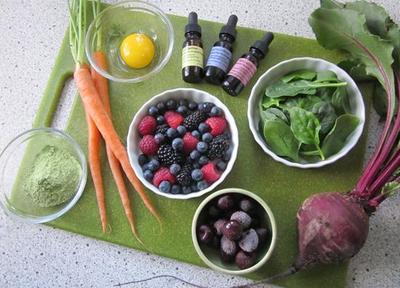 Given food colors have made their way into more and more foods, you have to become a detective of sorts if you want to ensure you are avoiding them entirely! Knowing the many side effects of synthetic food colours, it makes sense to avoid them and choose safer, natural alternatives instead.
By using the juices from the following foods to achieve a specific colour, will ensure you achieve a beautiful (and chemical free) end result!
➜ Green: spinach juice
➜ Orange: pumpkin or carrot juice
➜ Pink: raspberries or beetroot
➜ Blue: blueberries
➜ Purple: red cabbage or grapes
➜ Yellow: yellow carrots, turmeric powder, saffron flowers
Using natural food colours will produce more of a pastel colour than the commercially produced dyes so you may need to experiment if you seeking a very specific end result. However, the taste will be better, you won't experience allergic reactions or side effects and your body will thank you!
In the comments section below, tell us how you have used natural food colorings or what brands of safe, natural food colours are your favorites!
 The Shopper's Guide to Pesticides is a key resource for consumers who want to minimize their exposure to pesticides. The Shopper’s Guide will help you determine which fruits and vegetables have the most pesticide residues and are the most important to buy organic. You can lower your pesticide consumption by nearly 80% by avoiding the 12 most contaminated fruits and vegetables and instead eating the least contaminated produce, according to EWG calculations.
The health benefits of a diet rich in fruits and vegetables outweigh the risks of pesticide exposure. Use EWG's Shopper's Guide to Pesticides™ to reduce your exposures as much as possible, but eating conventionally-grown produce is far better than not eating fruits and vegetables at all. The Shopper's Guide to Pesticides in Produce™ will help you determine which fruits and vegetables have the most pesticide residues and are the most important to buy organic. You can lower your pesticide intake by avoiding the 12 most contaminated fruits and vegetables and choosing the least contaminated produce.
For the second year, we have expanded the Dirty Dozen™ with a Plus category to highlight two crops – domestically-grown summer squash and leafy greens, specifically kale and collards. These crops did not meet traditional Dirty Dozen™ criteria but were commonly contaminated with pesticides exceptionally toxic to the nervous system.
Though the Environmental Protection Agency has been restricting the uses of the most toxic pesticides, they are still detected on some foods. For example, green beans were on last year's Plus list because they were often contaminated with two highly toxic organophosphates. Those pesticides are being withdrawn from agriculture. But leafy greens still show residues of organophosphates and other risky pesticides. That's why they are on the Plus list for 2013.
Tests in 2008 found that some domestically-grown summer squash – zucchini and yellow crookneck squash -- contained residues of harmful organochlorine pesticides that were phased out of agriculture in the 1970s and 1980s but that linger on some farm fields.
Use the Environmental Working Group's Shopper’s Guide to Pesticides to reduce your exposure as much as possible, because eating conventionally-grown produce is far better than not eating fruits and vegetables at all.
In this next video, Harvard professor Chensheng (Alex) Lu explains why people should avoid pesticides.
 Bee pollen is a holistic remedy used throughout the world. Unfortunately the vast amount of uses that pollen can be used for are often overlooked.
Dr. Gabriel Cousens MD, has listed bee pollen as one of his 22 most recommended food energies.
Bee Pollen is made by honeybees, it is loaded with antioxidants and is nature's most complete nourishing foods.
Pollen contains nearly all nutrients required by humans, free amino acids, rutin, vitamins, including B-complex, and folic acid and is rich in protein. Bee Pollen can be used medicinally for a wide range of conditions from prostate health to skin conditions and can help correct specific nutritional imbalances within the body.
Here are just 10 great reasons to add fresh bee pollen to your daily diet… although there are many more! :
1. Energy Enhancer - The range of nutrients found within bee pollen makes it a great natural energizer. The carbohydrates, protein and B vitamins can help keep you going all day by enhancing stamina and fighting off fatigue.
2. Skin Soother - Bee pollen is often used in topical products that aim to treat inflammatory conditions and common skin irritations like psoriasis or eczema. The amino acids and vitamins protect the skin and aid the regeneration of cells.
3. Respiratory System - Bee pollen contains a high quantity of antioxidants that may have an anti-inflammatory effect on the tissues of the lungs, preventing the onset of asthma.
4. Treating Allergies – Pollen reduces the presence of histamine, ameliorating many allergies. Dr. Leo Conway, M.D of Denver Colorado, reported that 94 percent of his patients were completely free from allergy symptoms once treated with oral feeding of pollen. Everything from asthma to allergies to sinus problems were cleared, confirming that bee pollen is wonderfully effective against a wide range of respiratory diseases.
5. Digestive System - In addition to healthful vitamins, minerals and protein, bee pollen contains enzymes that can aid in digestion. Enzymes assist your body in getting all the nutrients you need from the food that you eat.
6. Immune System Booster - Pollen is good for the intestinal flora and thereby supports the immune system. According to holistic health expert Dr. Joseph Mercola, bee pollen has antibiotic-type properties that can help protect the body from contracting viruses. It's also rich in antioxidants that protect the cells from the damaging oxidation of free radicals.
7. Treats Addictions – Used holistically for healing addictions and inhibiting cravings by suppressing impulses. Because bee pollen crashes cravings, it is a very useful research is needed into this benefit, particularly when it comes to weight management.
8. Supports the Cardiovascular System - Bee Pollen contains large amounts of Rutin; an antioxidant bioflavonoid that helps strengthen capillaries, blood vessels, assists with circulatory problems and corrects cholesterol levels. Its potent anticlotting powers could help prevent heart attack and stroke.
9. Prostate Aid - Men who suffer from benign prostate hyperplasia can find relief by using bee pollen. Bee pollen can help reduce inflammation to stop frequent urges to urinate.
10. Infertility Problems - Bee pollen stimulates and restores ovarian function, therefore may be used to assist in accelerating pregnancy. As well as being a hormonal booster it is also a great aphrodisiac!
How should pollen be consumed?
Bee pollen is a food and acts faster and more effectively when taken at mealtime and especially with fruit, which let it gently, perform a little cleansing of the intestinal flora.
A spoonful at breakfast, preferably taken with a piece of fruit: the fruit fibers (raw hemicellulose) reinforce the activity of the fresh pollen.
*You'lll be pleased to know that bee keepers are able to remove pollen from hives without harming the bees or disturbing their routine.
Read More:
>> Looking For An Effective Skin Beauty Product?
Ah, Graduation — free at last! It was a fantastic experience; the thought that the days of essays, difficult assignments and exams had finally ended. Yeah, finishing a college degree is an accomplishment worth celebrating! | However, the ecstasy was just short-lived.
Frustrations slowly set in when unemployment issue shoved into the faces of our new college graduates. Evidence is slowly showing that the harm caused by the weak economy is immense. Unemployment has remained high in the Philippines, at almost twice the level of neighboring
countries.
What’s more, almost 50% of the occupations
landed by the new professionals do not suit to their skills. A registered nurse becomes a bar tender. A civil engineer works on a department store. A teacher mans a ticket booth. While this squanders
their professions, it also displaces the less-educated workers who would normally occupy the position. Others would be forced to work abroad or in a company that pay less or have less room for growth. | Some will begin to regret spending too much for a career, which only yields little returns. What about the money that their parents spent in order to afford their way to their career? How are they going to pay this off? And more and more questions will run
through their minds. They feel increasingly desperate the longer their job search drags on. The newly-graduates feel helpless and are left with limited options. Their future seems to look bleak.
But it shouldn’t mean that they leave all these things to fate and do nothing. As Mary Kay Ash once said: “For every failure, there’s an alternative course of action. You just have to find it. When you
come to a roadblock, take a detour.”
By preference, these young professionals
can stop seeking for a job and be the boss
by starting a business of their own. | Finding it hard to get a job? Why not start your own business instead of working of someone else? | | When you start your own business you will have the satisfaction of being your own boss.
And this will also ease you from worrying about finding a job; you’ll already have one. Almost everyone aspires to own a business; with huge hopes and dreams. But the fact is it is really hard to find a business opportunity with a small initial investment that generates high return and high earning potential. EARN MONEY WHILE DRINKING DXN COFFEE! Yes, the DXN MLM business is for you who have the desire to earn the kind of income
that will give you the life that you deserve.
>> Enjoy true financial freedom
>> Spend more time with your family
>> Opportunity to travel around the world
>> Be your own boss and choose your own hours
>> Success in sharing and helping others | | | DXN MLM business is about achieving long-term financial security. With unemployment numbers extremely high nowadays, many people are turning to MLM to make an extra income.
However, you should be careful to work with only dependable MLM companies. There are a lot of companies out there that promise you big income but can’t deliver the goods.
That is why DXN is so special. DXN’s credentials can be seen in its track record.
DXN business doesn’t discriminate based on educational attainment, age, gender, nationality, physical attributes, even experience and appearance. This business has a fair shake at true financial success for everyone.
| |
| If the pancreas's beta cells are damaged or destroyed, then yes, diabetes can occur. It wouldn't quite be the same as Type 1, which is an autoimmune attack onto the pancreas, but the pancreas would become insulin deficient, much like it would for a Type 1. The person certainly wouldn't be a Type 2, which is characterized as insulin resistance.
Beta cells have been known to regrow, but once the damage is done, it's probably done. A pancreatic transplant might work for a person who has diabetes from a damaged pancreas rather than an autoimmune disorder.
| | 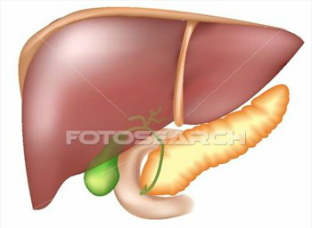 Pancreatic cancer is very dangerous since it rarely detected in its early stages and often comes with a very poor prognosis. Adding to the danger of this disease is the fact that pancreatic cancer tends to spread rapidly and the signs and symptoms aren’t always apparent until it’s too late.
TypesThere are two main types of pancreatic cancer, each of which is categorized by which cells the cancer originally forms in:
- Cancer formed in the pancreas ducts: The pancreas ducts are responsible for producing juices which help with digestion. When cancer first forms in the cells located in the ducts of the pancreas, this type of pancreatic cancer occurs. This type of cancer is also referred to as adenocarcinoma and accounts for most of the cases of pancreatic cancer.
- Cancer formed in the hormone-producing cells: When cancer first forms in the cells of the pancreas responsible for producing hormones, this type of cancer occurs. This type of cancer is also referred to as endocrine cancer and is much rarer than cancer which is formed in the pancreas ducts.
SymptomsOne of the most dangerous things about pancreatic cancer is that tumors in the pancreas can often grow for some time without any symptoms. However, there are a few indicators that pancreatic cancer may be developing, including:
- Dark-colored urine
- Clay-colored stools
- Nausea
- Vomiting
- Loss of appetite
- Unintentional weight loss
- Jaundice (skin or eyes that become yellowish in color)
- Pain or discomfort in the upper abdomen
- Diarrhea
- Indigestion
- Back pain
- Blood clots
- Depression
These symptoms may be indicators of any number of diseases besides pancreatic cancer, so it’s important to see a doctor if you find that you are experiencing any of these symptoms.
Causes And Risk FactorsPancreatic cancer is caused by a genetic mutation in the cells of the pancreas. The mutations allow the cells to divide and grow at unusually rapid rates. In addition, the mutations also allow the cells to stay alive under conditions where normal cells would die. Often, the accumulating cells will turn into a mass that forms a tumor.
There are several factors which can increase a person’s risk for pancreatic cancer, including:
- Age: The older an individual is, the higher their risk for pancreatic cancer is. This is particularly true once a person surpasses the age of 60.
- Sex: Pancreatic cancer is slightly more common in women compared to men.
- Race: African-Americans are more likely to get pancreatic cancer than people of other races.
- Family history: Having a personal or family history of pancreatic cancer increases your risk for the disease. In addition, having a family history of certain genetic syndromes – including a BRCA2 gene mutation, Lynch syndrome and Peutz-Jeghers syndrome – increases a person’s risk for pancreatic cancer.
- Smoking: Smokers are more likely to get pancreatic cancer than non-smokers.
- Having certain health conditions: People with pancreatitis (chronic inflammation of the pancreas) or diabetes and those who are overweight or obese have a higher risk for pancreatic cancer.
PreventionThere are no proven ways to prevent pancreatic cancer completely, but many people can reduce their risk for the disease by taking the following steps:
- Quitting smoking
- Maintaining a healthy weight
- Eating a diet with lots of fruits, vegetables and whole grains
- Exercising regularly
TreatmentSadly, pancreatic cancer is one of the most deadly types of cancer. According to the U.S. National Library of Medicine, about 95 percent of people diagnosed with pancreatic cancer will not be alive 5 years later. Additionally, those whose pancreatic cancer cannot be removed or that has spread to other parts of the body are generally given one year or less to live. Because of the poor prognosis of the disease, some people do not undergo intensive treatment once they are diagnosed. However, some types of pancreatic cancer may be treatable, and for those types of cancer the following treatments are often used:
- Surgery: When possible, doctors will try to remove as much of the cancer from the pancreas as possible. One common method for this is the Whipple procedure, which involves removing the head of the pancreas, a portion of the small intestine, the gallbladder and part of the bile duct. A distal pancreatectomy involves removing the tail of the pancreas. In either case, surgery always has a risk of bleeding or infection.
- Radiation therapy: With radiation therapy, high-energy beams are used to kill the cancer cells in the pancreas and other areas to which it has spread.
- Chemotherapy: Chemotherapy is the use of drugs to kill off cancer cells. The drugs are administered orally or intravenously.
- Clinical trials: Because pancreatic cancer is often accompanied by a poor prognosis, many people join clinical trials to explore new ways to treat their disease. This may involve taking a drug or even getting a experimental pancreatic cancer vaccine.
 Kidney stones (renal lithiasis) are small, hard deposits that form inside your kidneys. The stones are made of mineral and acid salts. Kidney stones have many causes and can affect any part of your urinary tract — from your kidneys to your bladder. Often, stones form when the urine becomes concentrated, allowing minerals to crystallize and stick together.
 Passing kidney stones can be quite painful, but the stones usually cause no permanent damage.
Depending on your situation, you may need nothing more than to take pain medication and drink lots of water to pass a kidney stone. In other instances, surgery may be needed. Your doctor may recommend preventive treatment to reduce your risk of recurrent kidney stones if you're at increased risk of developing them again.
A kidney stone may not cause symptoms until it moves around within your kidney or passes into your ureter — the tube connecting the kidney and bladder.
 Signs and Symptoms:
Severe pain in the side and back, below the ribs
Pain that spreads to the lower abdomen and groin
Pain that comes in waves and fluctuates in intensity
Pain on urination
Pink, red or brown urine
Cloudy or foul-smelling urine
Nausea and vomiting
Persistent urge to urinate
Urinating more often than usual
Fever and chills if an infection is present
Pain caused by a kidney stone may change — for instance, shifting to a different location or increasing in intensity — as the stone moves through your urinary tract.
Seek immediate medical attention if you experience:
Pain so severe that you can't sit still or find a comfortable position
Pain accompanied by nausea and vomiting
Pain accompanied by fever and chills
Blood in your urine
Difficulty passing urine
Causes of Kidney Stones
Kidney stones often have no definite, single cause, although several factors may increase your risk.
Kidney stones form when your urine contains more crystal-forming substances — such as calcium, oxalate and uric acid — than the fluid in your urine can dilute. At the same time, your urine may lack substances that keep crystals from sticking together, creating an ideal environment for kidney stones to form.
Types of kidney stones
Knowing the type of kidney stone helps determine the cause and may give clues on how to reduce your risk of getting more kidney stones.
Types of kidney stones include:
1. Calcium stones. Most kidney stones are calcium stones, usually in the form of calcium oxalate. Oxalate is a naturally occurring substance found in food. Some fruits and vegetables, as well as nuts and chocolate, have high oxalate levels. Your liver also produces oxalate. Dietary factors, high doses of vitamin D, intestinal bypass surgery and several metabolic disorders can increase the concentration of calcium or oxalate in urine. Calcium stones may also occur in the form of calcium phosphate.
2. Struvite stones. Struvite stones form in response to an infection, such as a urinary tract infection. These stones can grow quickly and become quite large, sometimes with few symptoms or little warning.
3. Uric acid stones. Uric acid stones can form in people who don't drink enough fluids or who lose too much fluid, those who eat a high-protein diet, and those who have gout. Certain genetic factors also may increase your risk of uric acid stones.
4. Cystine stones. These stones form in people with a hereditary disorder that causes the kidneys to excrete too much of certain amino acids (cystinuria).
5. Other stones. Other, rarer types of kidney stones can occur.
Risk factors. Factors that increase your risk of developing kidney stones include:
* Family or personal history. If someone in your family has kidney stones, you're more likely to develop stones, too. And if you've already had one or more kidney stones, you're at increased risk of developing another.
* Being an adult. Kidney stones are most common in adults age 40 and older, though kidney stones may occur at any age.
* Being a man. Men are more likely to develop kidney stones, although an increasing number of women are developing kidney stones.
* Dehydration. Not drinking enough water each day can increase your risk of kidney stones. People who live in warm climates and those who sweat a lot may be at higher risk than others.
* Certain diets. Eating a diet that's high in protein, sodium and sugar may increase your risk of some types of kidney stones. This is especially true with a high-sodium diet. Too much sodium in your diet increases the amount of calcium your kidneys must filter and significantly increases your risk of kidney stones.
* Being obese. High body mass index (BMI), large waist size and weight gain have been linked to an increased risk of kidney stones.
* Digestive diseases and surgery. Gastric bypass surgery, inflammatory bowel disease or chronic diarrhea can cause changes in the digestive process that affect your absorption of calcium and water, increasing the levels of stone-forming substances in your urine.
* Other medical conditions. Diseases and conditions that may increase your risk of kidney stones include renal tubular acidosis, cystinuria, hyperparathyroidism, certain medications and some urinary tract infections.
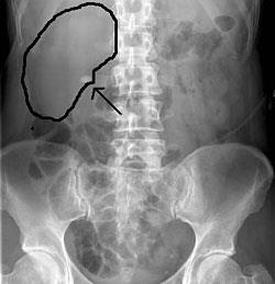 Tests and diagnosis
If your doctor suspects you have a kidney stone, you may have diagnostic tests and procedures, such as:
* Blood tests. Blood tests may reveal too much calcium or uric acid in your blood. Blood test results help monitor the health of your kidneys and may lead your doctor to check for other medical conditions.
* Urine tests. Tests of your urine, such as the 24-hour urine collection, may show that you're excreting too many stone-forming minerals or too few stone-preventing substances.
* Imaging tests. Imaging tests may show kidney stones in your urinary tract. Options range from simple abdominal X-rays, which can miss small kidney stones, to high-speed computerized tomography (CT) that may reveal even tiny stones. Other imaging options include an ultrasound, a noninvasive test, and intravenous pyelography, which involves injecting dye into your arm vein and taking X-rays as the dye travels through your kidneys and bladder.
* Analysis of passed stones. You may be asked to urinate through a strainer to catch stones that you pass. Lab analysis will reveal the makeup of your kidney stones. Your doctor uses this information to determine what's causing your kidney stones and treatments.
Small stones with minimal symptoms
Most kidney stones won't require invasive treatment. You may be able to pass a small stone by:
Drinking water. Drinking as much as 2 to 3 quarts (1.9 to 2.8 liters) a day may help flush out your urinary system. Unless your doctor tells you otherwise, drink enough fluid — mostly water — to produce clear or nearly clear urine.
Pain relievers. Passing a small stone can cause some discomfort. To relieve mild pain, your doctor may recommend pain relievers.
Medical therapy. Your doctor may give you a medication to help pass your kidney stone. This type of medication, known as an alpha blocker, relaxes the muscles in your ureter, helping you pass the kidney stone more quickly and with less pain.
 Large stones and those that cause symptoms
Kidney stones that can't be treated with conservative measures — either because they're too large to pass on their own or because they cause bleeding, kidney damage or ongoing urinary tract infections — may require more invasive treatment. Procedures may include:
Using sound waves to break up stones. For certain kidney stones — depending on size and location — your doctor may recommend a procedure called extracorporeal shock wave lithotripsy (SWL). SWL uses sound waves to create strong vibrations (shock waves) that break the stones into tiny pieces that can be passed in your urine. The procedure lasts about 45 to 60 minutes and can cause moderate pain, so you may be under sedation or light anesthesia to make you comfortable. SWL can cause blood in the urine, bruising on the back or abdomen, bleeding around the kidney and other adjacent organs, and discomfort as the stone fragments pass through the urinary tract.
 Surgery to remove very large stones in the kidney. A procedure called percutaneous nephrolithotomy(nef-row-lih-THOT-uh-me) involves surgically removing a kidney stone using small telescopes and instruments inserted through a small incision in your back. You'll receive general anesthesia during the surgery and be in the hospital for one to two days while you recover. Your doctor may recommend this surgery if SWL was unsuccessful or if your stone is very large.
 Using a scope to remove stones. To remove a smaller stone in your ureter or kidney, your doctor may pass a thin lighted tube (ureteroscope) equipped with a camera through your urethra and bladder to your ureter. Once the stone is located, special tools can snare the stone or break it into pieces that will pass in your urine. Your doctor may then place a small tube (stent) in the ureter to relieve swelling and promote healing. You may need general or local anesthesia during this procedure.
Parathyroid gland surgery. Some calcium stones are caused by overactive parathyroid glands, which are located on the four corners of your thyroid gland, just below your Adam's apple. When these glands produce too much parathyroid hormone (hyperparathyroidism), your calcium levels can become too high and kidney stones may form as a result. Hyperparathyroidism sometimes occurs when a small, benign tumor forms in one of your parathyroid glands or you develop another condition that leads these glands to produce more parathyroid hormone. Removing the growth from the gland stops the formation of kidney stones. Or your doctor may recommend treatment of the condition that's causing your parathyroid gland to overproduce the hormone.
LATEST STUDIES:
Additional Health Tips: Home Remedies for Kidney Stones.
1. Drink eight glasses of water every day. Actually, the scientific evidence indicates that the benefits of drinking water kick in at about five glasses a day, but if you have kidney stones and you are not currently having an attack, it's always best to drink as much water as you can.
2. Drink DXN RG & GL, DXN Spirulina, DXN Lingzhi Coffee, DXN Spica Tea, Cordypine. The Harvard School of Public health has found that drinking 1 cup (240 ml) of regular or decaf coffee every day reduces the risk of kidney stones by 10%. Drinking a beer a day (more precisely, drinking 240 ml of beer a day, which is less than the average can of beer) reduces the risk of kidney stones by 21%. And drinking a glass of wine a day reduces the risk of kidney stones by 39%. Drinking more coffee, beer, or wine, however, is of no additional benefit.
3. Don't drink juice (except lemon juice). In the same study, the Harvard School of Public Health found that drinking a cup of apple juice every day increases the risk of kidney stones by 75%, and drinking a cup or orange juice or grapefruit juice every day increases the risk of stones by 85%. Cranberry extract also raises the risk of stones, although unsweetened juice reduces it. The negative effects of fruit juices are worse when juice is the only fluid consumed at a meal.
4. Drink milk. Most kidney stones contain calcium, so it would make logical sense that consuming less calcium would lower the risk of stones. Actually, the exact opposite happens. At least in men, a low-calcium diet nearly doubles the risk of stones. Taking calcium supplements, in women, lowers the risk of stones.
5. Don't avoid veggies.
6. Avoid eating too much meat. Only about one-third of people who get kidney stones suffer negative effects of a high-protein diet. For the kidney stone sufferers, however, a meat-free diet can be very helpful.
7. Consider taking a potassium-magnesium citrate supplement. One three-year study found taking potassium-magnesium citrate reduces the frequency of kidney stone attacks by a whopping 80%. It is essential, however, to make sure you do not have other kinds of kidney damage before taking any potassium supplement, since impaired kidneys have difficult excreting excessive potassium. People who take ACE inhibitors or ACE receptor blockers for high blood pressure should also avoid this supplement.
8. If you get brown or black kidney stones, consider taking inositol nicotinate, which is derived from rice bran. Just be sure to take no more than the dosage recommended on the label. Taking too much inositol nicotinate can result in itching, flushing, dizziness, and palpitations.
9. Drink mineral water. Mineral water reduces concentrations of calcium and uric acid, making the urine less alkaline and less likely to form stones. Our recommendations: Besides practicing the wellness tips above, include some health supplements into your daily diet works best to promote a healthy respiratory system. A good combination of the products listed below exerts synergistic effect in maintaining a strong respiratory system:
RG, GL, CORDYCEPS & CORDYPINE
Use GANODERMA LUCIDUM
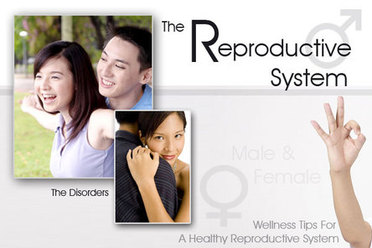 The major function of the human reproductive system is to produce offspring, ensure survival of the species and passing on hereditary traits from one generation to the next. The human reproductive system has four main functions: To produce egg cells (female) and sperm cells (male); to transport and sustain these cells; to nurture the developing offspring and to produce hormones.
The male reproductive system consists of a pair of testes and a network of excretory ducts, seminal vesicles, the prostate and the penis. The organs of the female reproductive system produce and sustain the female ovum, transport these cells to a site where the sperm fertilizes and provides a suitable environment for the developing fetus and produces the female sex hormones. The female reproductive system also includes the ovaries, fallopian tubes, uterus, vagina, accessory glands, and external genital organs.
Disorder of the Reproductive System
There are wide number of reproductive system disorders. A few examples are as follows:
> Endometriosis
Endometriosis is a disorder of the female reproductive system. In endometriosis, the endometrium, which normally lines the uterus, grows in other places such as fallopian tubes, ovaries or the tissue lining the pelvis. This tissue thickens, breaks down and bleeds each month. Because there is nowhere for the blood from this displaced tissue to exit body, it becomes trapped and irritate the surrounding tissues.
> Ovarian Cysts
Ovarian cysts are non cancerous sacs filled with fluid or semi-solid material in the ovary. Although they are common and generally harmless, they can become a problem if they grow very large. Large cysts tend to push on surrounding organs and may lead to abdominal pain. In most cases, cysts will disappear on their own and treatment is unnecessary.
> Impotence
Impotence is a disorder of male reproductive system. When a man cannot get an erection to have sex or unable to keep an erection long enough to complete sexual intercourse, it is called erectile dysfunction or impotence. Some physical causes of erectile dysfunction include too much alcohol intake and tobacco abuse, brain or spinal-cord injuries, liver or kidney failure, Parkinson's disease and stroke.
> Benign Prostatic Hyperplasia (BPH)
BPH is caused by enlargement of prostate gland, which normally happen on elderly men. This may result in obstruction of the neck of the bladder and impairing urination. As the urethra is squeezed more tightly by the enlarged prostate, the bladder may not be able to completely empty. The bladder dilates and the increased pressure is transmitted through the urethra to the kidney. This lead to damage and impaired function of the kidney
> Sexually Transmitted Disease
Sexually transmitted diseases (STDs) are infections that can be transferred from one person to another through sexual contact. The causes of STDs are bacteria, parasites and viruses. There are more than 20 types of STDs, such as Chlamydia, Gonorrhea, Herpes Simplex and Syphilis. Most STDs affect both men and women, but in many cases the health problems they cause can be more severe for women. If a pregnant woman has an STD, it can cause serious health problems for the baby.
Wellness Tips For Respiratory System
> Manage your stress wisely
Reproductive system especially female reproductive system is highly sensitive to hormonal change. Long term stress lead to hormonal imbalance and thus affect reproductive health system.
> Safe sex
Correct usage of latex condoms helps in reducing the risk of acquiring or spreading STDs.
> Quit smoking
Quit your smoking habit as there are many studies show that cigarette smoking is associated with erectile dysfunction.
> Control alcohol intake
Drink alcohol moderately whereas excessive consumption of alcohol is also one the possible causes of erectile dysfunction.
> Adopt a healthy diet
Take plenty of fresh vegetables and fruits daily. Control the intake of meat and poultry as the residue of antibiotic or synthetic hormone injected to accelerate the growth will affect hormonal balance in our body.
> Our recommendations
Regular consumption of health supplements below helps in promoting a healthy female reproductive system:
* Spirulina
* Bee Pollen
* Cordyceps
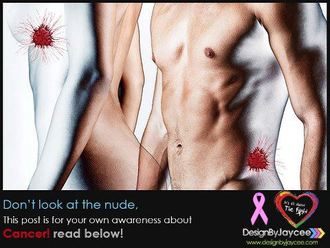 AFTER YEARS OF TELLING PEOPLE CHEMOTHERAPY IS THE ONLY WAY TO TRY AND ELIMINATED CANCER, Johns Hopkins IS FINALLY STARTING TO TELL YOU THERE IS AN ALTERNATIVE WAY...1. Every person has cancer cells in the body. These cancer cells do not show up in the standard tests untill they have multiplied to a few billion. When doctors tell cancer patients that there are no more cancer cells in their bodies after treatment, it just means the tests are unable to detect the cancer cells because they have not reached the detectable size.2. Cancer cells occur between 6 to more than 10 times in a person´s lifetime.3. When the person´s immune system is strong the cancer cell will be destroyed and prevented from multiplying and forming tumors.4. When a person has cancer it indicates the person has multiple nutritional deficiencies. These cound be due to genetic, environmental, food and lifestyle factors.5. To overcome the multiple nutritional deficiencies, changing diet and including supplements will strengthen the immune system.6. Chemotherapy involves poisoning the rapidly-growing cancer cells and also destroys rapidly-growing healthy cells in the bone marrow, gastro-intestinal tract etc, and can cause organ damage, like liver, kidneys, heart, lungs etc.7. Radiation while destroying cancer cells also burns, scars and damages healthy cells, tissues and organs.8. Initial treatment with chemotherapy and radiation will often reduce tumor size. However prolonged use of chemotherapy and radiation do not result in more tumor destruction.9. When the body has too much toxic burden from chemotherapy and radiation the immune system is either compromised or destroyed, hence the person can succumb to various kinds of infections and complications.10. Chemotherapy and radiation can cause cancer cells to mutate and become resistant and difficult to destroy. Surgery can also cause cancer cells to spread to other sites.11. An effective way to battle cancer is to STARVE the cancer cells by not feeding it with foods it needs to multiple.What cancer cells feed on:a. Sugar is a cancer-feeder. By cutting off sugar it cuts off one important food supply to the cancer cells. Note: Sugar substitutes like NutraSweet, Equal, Spoonful, etc are made with Aspartame and it is harmful. A better natural substitute would be Manuka honey or molasses but only in very small amounts. Table salt has a chemical added to make it white in colour. Better alternative is Bragg's aminos or sea salt.b. Milk causes the body to produce mucus, especially in the gastro-intestinal tract. Cancer feeds on mucus. By cutting off milk and substituting with unsweetened soy milk, cancer cells will starved.c. Cancer cells thrive in an acid environment. A meat-based diet is acidic and it is best to eat fish, and a little chicken rather than beef or pork. Meat also contains livestock antibiotics, growth hormones and parasites, which are all harmful, especially to people with cancer.d. A diet made of 80% fresh vegetables and juice, whole grains, seeds, nuts and a little fruits help put the body into an alkaline environment. About 20% can be from cooked food including beans. Fresh vegetable juices provide live enzymes that are easily absorbed and reach down to cellular levels within 15 minutes t o nourish and enhance growth of healthy cells.To obtain live enzymes for building healthy cells try and drink fresh vegetable juice (most vegetables including bean sprouts) and eat some raw vegetables 2 or 3 times a day. Enzymes are destroyed at temperatures of 104 degrees F (40 degrees C).e. Avoid coffee, tea, and chocolate, which have high caffeine. Green tea is a better alternative and has cancer-fighting properties. Water--best to drink purified water, or filtered, to avoid known toxins and heavy metals in tap water. Distilled water is acidic, avoid it.12. Meat protein is difficult to digest and requires a lot of digestive enzymes. Undigested meat remaining in the intestines will become putrified and leads to more toxic buildup.13. Cancer cell walls have a tough protein covering. By refraining from or eating less meat it frees more enzymes to attack the protein walls of cancer cells and allows the body's killer cells to destroy the cancer cells.14. Some supplements build up the immune system (IP6, Flor-ssence, Essiac, anti-oxidants, vitamins, minerals, EFAs etc.) to enable the body's own killer cells to destroy cancer cells. Other supplements like vitamin E are known to cause apoptosis, or programmed cell death, the body's normal method of disposing of damaged, unwanted, or unneeded cells.15. Cancer is a disease of the mind, body, and spirit. A proactive and positive spirit will help the cancer warrior be a survivor.Anger, unforgiving and bitterness put the body into a stressful and acidic environment. Learn to have a loving and forgiving spirit. Learn to relax and enjoy life.16. Cancer cells cannot thrive in an oxygenated environment. Exercising daily, and deep breathing help to get more oxygen down to the cellular level. Oxygen therapy is another means employed to destroy cancer cells.Moderatorhttp://dxntriplicateam.wix.com/marktacordahttp://dxnbarcelona.dxnnet.com/(PLEASE SHARE IT TO PEOPLE YOU CARE ABOUT)
|




















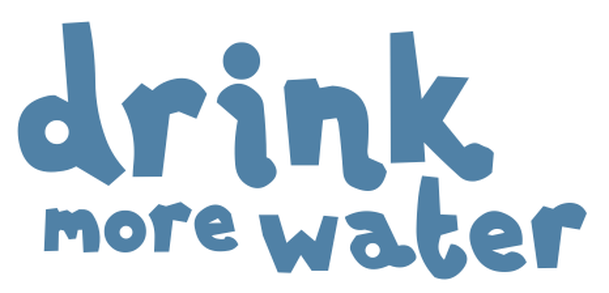
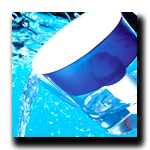



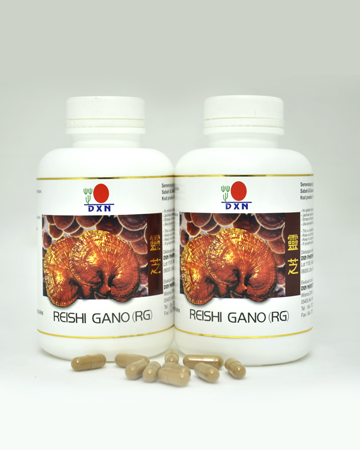

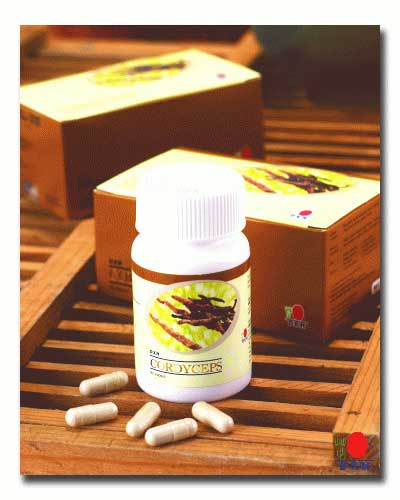




 RSS Feed
RSS Feed